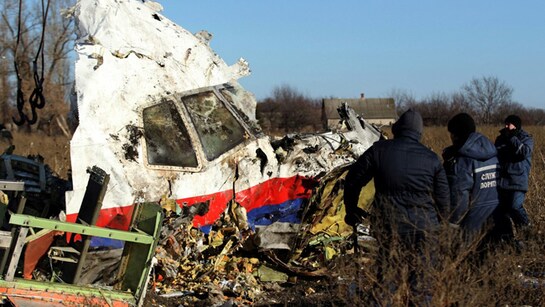Missing link: A black box for more flight safety | heise online
Flying is one of the safest means of transportation there is. According to the International Air Transport Association (IATA), there were only seven fatal accidents out of a total of 40.6 million flights in commercial aviation in 2024. However, this was not always the case.
After the pioneers of the skies and two world wars, there was a boom in commercial aviation. Passenger airplanes, initially still propeller-driven, became a popular means of transport. The Comet, built by British aircraft manufacturer de Havilland, was the first passenger jet airliner to fly from 1952, and from 1958 the Comet flew on the transatlantic route between London and New York for the first time.
But the Comet set another sad milestone: the first fatal accident involving a jet-powered passenger aircraft in 1953. A little later, there were further Comet crashes, the cause of which experts were initially unable to explain.
At the Australian Aeronautical Research Laboratories in Melbourne, fuel expert David Warren investigates the Comet accidents. After seeing a portable recording device at a trade fair, he had an idea: why not also record the voices in the cockpit to obtain additional information? Devices that recorded rudimentary flight data already existed.
David Warren with a prototype of his flight recorder.
(Image: Australian Department of Defence/gemeinfrei)
Warren, who was born 100 years ago on March 25, is considered the father of modern flight recorders, which can be found today as Flight Data Recorders (FDR) and Cockpit Voice Recorders (CVR) in the vast majority of commercial aircraft. The so-called "black box" is also available as a combined device called the Cockpit Voice and Data Recorder (CVDR).
In April 1954, Warren publishes a technical memorandum that is cited in numerous scientific publications: "A Device for Assisting Investigation into Aircraft Accidents." In his paper, Warren refers directly to the Comet crashes.
Warren's work was not properly recognized until very late, as Jeremy Sear describes in detail in 2001 in "The ARL 'Black Box' Flight Recorder – Invention and Memory" (PDF). Ken Fraser, who worked with Warren, has published the documents on his website, which is well worth reading.

Was fehlt: In der rapiden Technikwelt häufig die Zeit, die vielen News und Hintergründe neu zu sortieren. Am Wochenende wollen wir sie uns nehmen, die Seitenwege abseits des Aktuellen verfolgen, andere Blickwinkel probieren und Zwischentöne hörbar machen.
In 2002, Australia also recognized his conceptual work up to the prototype of the black box and awarded Warren the Officer of the Order of Australia.
The devices have been mandatory in commercial aviation for some time. In the 1960s, an Australian judge was the first to ensure that Australian airlines installed a flight recorder. In a court case concerning an air accident, the judge learned of the development of a black box by Warren, as Fraser describes on his website.
Over the years, it became mandatory worldwide – In a TV interview, Warren later wondered why it had taken the Americans so much longer to introduce the technology. Without the black boxes for voice and data, it is not possible today, even if there are regional differences in implementation. However, Warren did not benefit from the development as the device was not patented.
The voice recorder not only records conversations in the cockpit, as the name might suggest. As the US National Transportation Safety Board (NTSB) describes it, there is usually a microphone in the control panel above the cockpit crew, which also records background noises such as landing gear extension, instrument warnings or even engine noise.
According to the NTSB, the data recorder must record at least 88 parameters. However, modern flight recorders now record more than 1000 parameters. The requirements for flight recorders have become increasingly stringent over the years, not least because new weaknesses are discovered in many accidents.
A modern black box must be able to withstand temperatures of up to 1100°C for at least one hour. It must be able to withstand loads of up to 3400 G on impact. The flight logs must be able to withstand water pressure at a depth of over 6000 meters and even then still be localizable, but only for 30 days.
While the CVR in Europe records for 25 hours, in the USA the requirement is still 2 hours, and in some older models it is only 30 minutes. However, the US authorities also want to enforce the longer recordings.
The flight recorders have proprietary interfaces via which stored data can be read out – if the condition of the black box after an accident allows this. The flight data is stored on rotating hard disks and, in more recent models, SSDs. If the interfaces have been destroyed, the data can also be recovered directly from the storage medium in special laboratories.
However, flight recorders are not infallible, as accidents in recent years have repeatedly shown. The fact that the black box only transmits its location for 30 days was unfavorable in the case of the missing Malaysia Airlines MH370, for example. The plane, which went missing in 2014, has still not been found. When Jeju Air Flight 2216 crash-landed in South Korea, the flight recorders that were supposed to help with the investigation stopped recording data shortly before the crash.
Even if it cannot be definitively determined why the flight recorders stopped recording, the investigation of the scenarios alone should at least trigger discussions as to whether the flight recorders can be further improved. It can also be assumed that the flight recorders will continue to provide valuable data at least until the end of the recording – perhaps even concrete clues as to the course of the accident.
Despite the tragic accident in South Korea, 2024 clearly showed how rare crashes are. IATA recorded a total of seven fatal accidents on 40.6 million flights in 2024. Last year, 244 people lost their lives in a commercial airliner, 179 of whom were on Jeju Air flight 7C2216.
This makes 2024 a rather bad year, as the 5-year average is only 144 people per year killed on a commercial airliner. But even in this bad year, according to IATA, a passenger would have to travel on a typical commercial aircraft every day for 15.871 years on average to be involved in a fatal accident.
Aviation has become as safe as it is today, not least thanks to David Warren, the subsequent developments surrounding flight recorders and the analysis of data following accidents, which has now become standard practice.
The investigators of the Comet crashes in the 1950s did not yet have access to flight recorder data. On two flights, the planes broke apart in the air. After numerous tests, it became clear that the lightweight construction of the Comets was not able to withstand the cyclical pressure changes in the cabin in the long term.
(nen)













